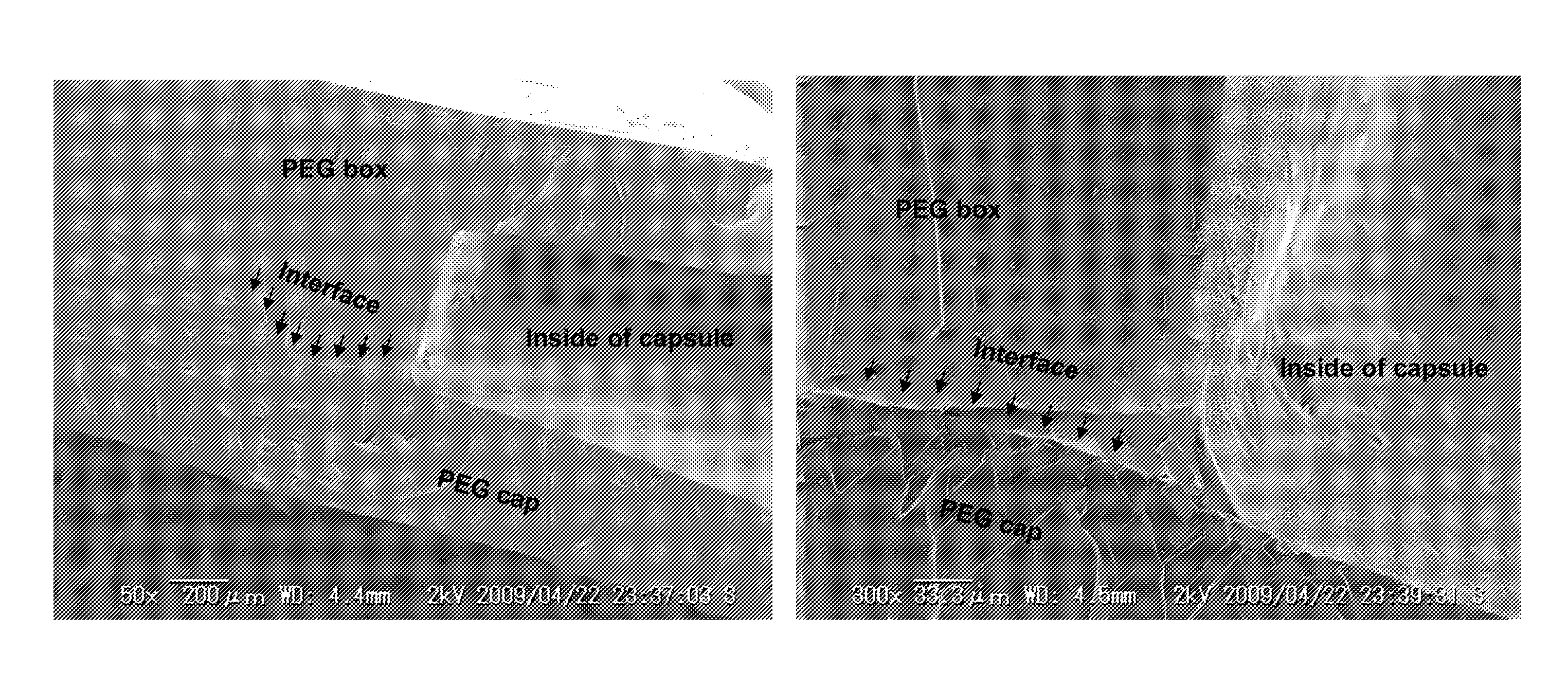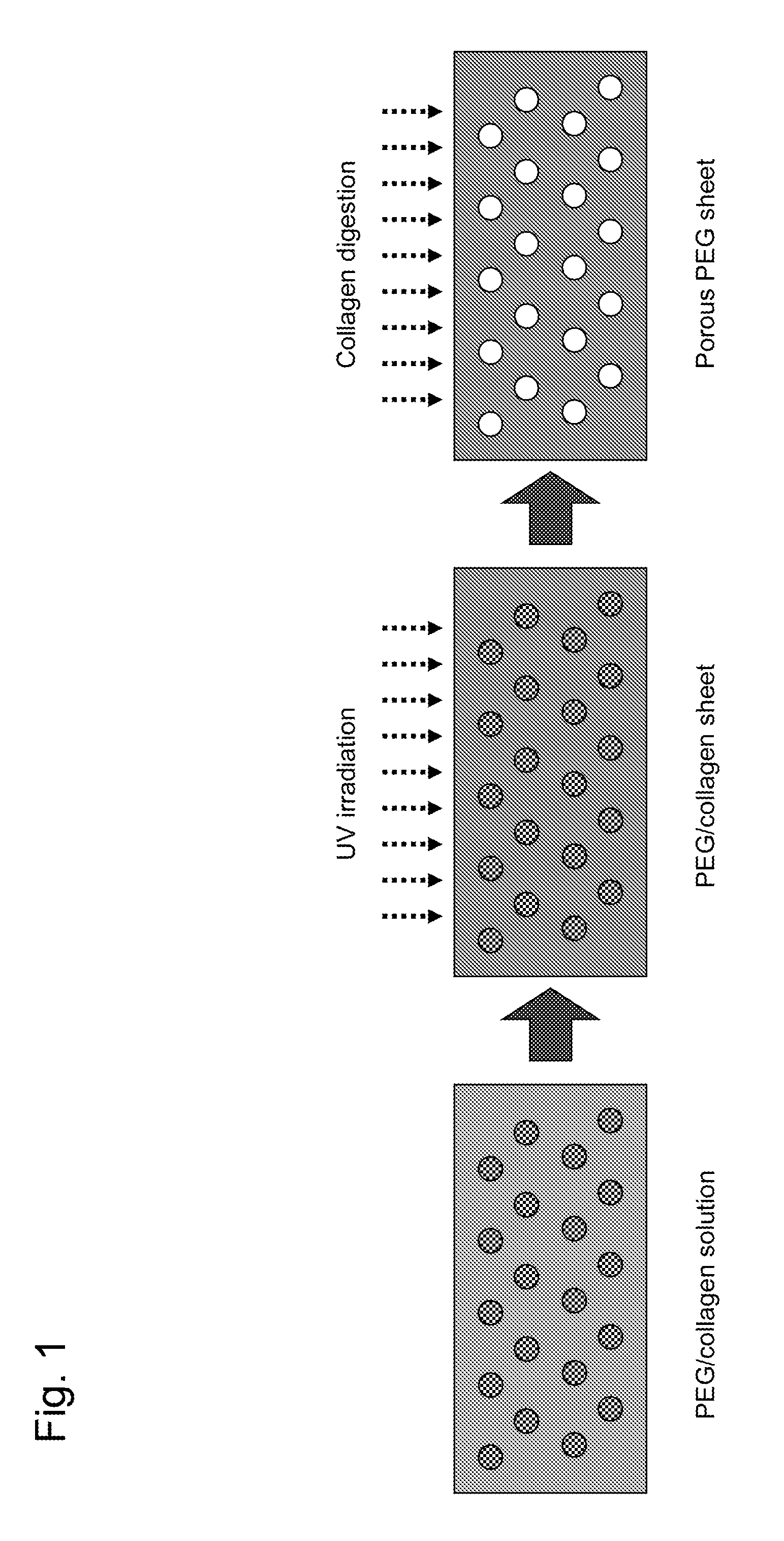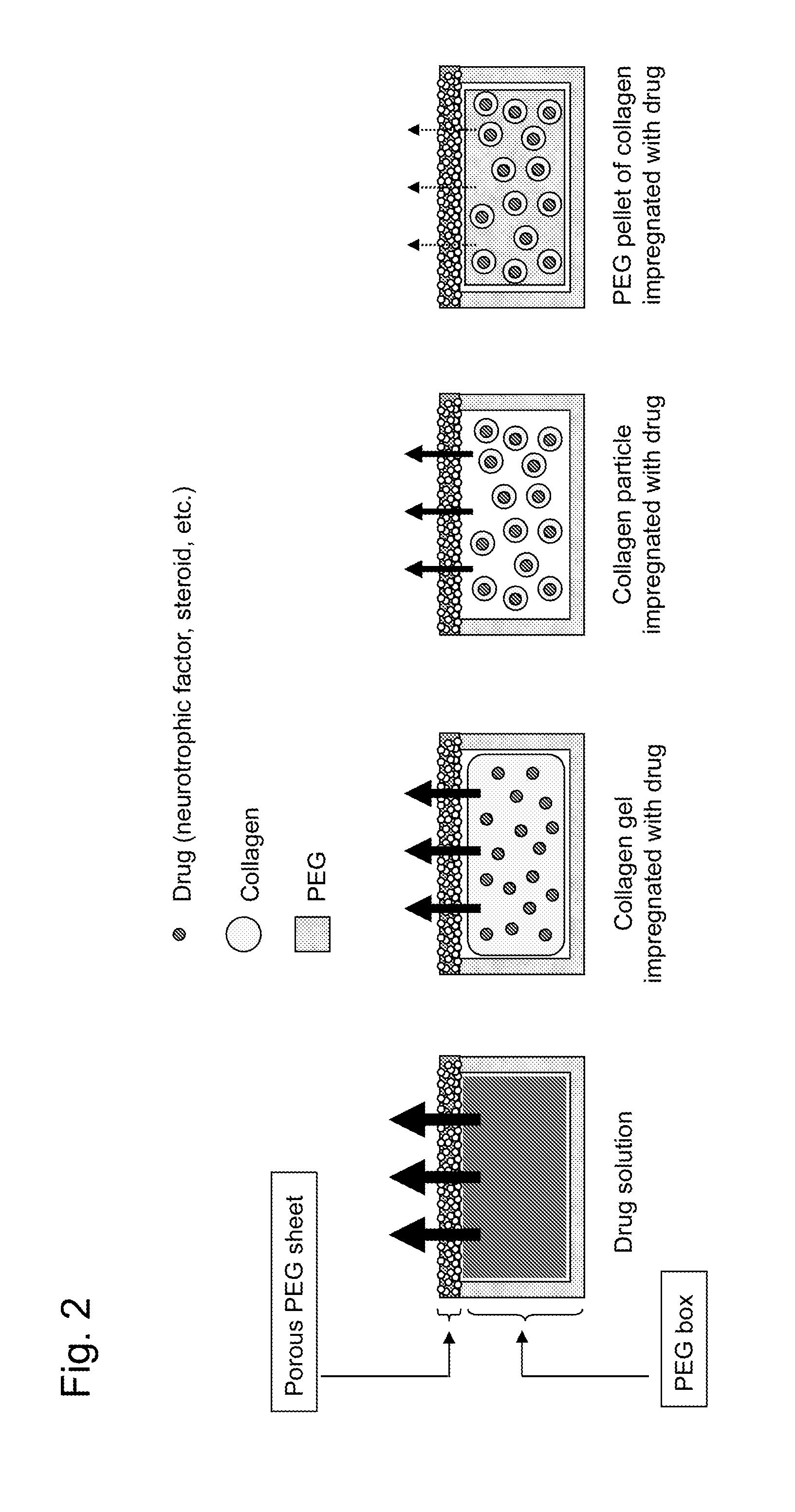Sustained drug delivery system
a delivery system and suction technology, applied in the direction of prosthesis, drug composition, peptide/protein ingredients, etc., can solve the problems of high risk of infection, heavy physical/economic burden on patients, and the most often difficult removal of the dds carrier thus administered, so as to achieve safe and simple implantation, easy removal, and easy removal
- Summary
- Abstract
- Description
- Claims
- Application Information
AI Technical Summary
Benefits of technology
Problems solved by technology
Method used
Image
Examples
Embodiment Construction
[0080]The present invention will be described below in detail.
[0081]The therapeutic drug reservoir capsule used in the sustained DDS of the present invention consists of a PEG-made box-shaped reservoir and a porous PEG sheet, and has a capsule structure in which the box-shaped reservoir is closed by a cap made of a sheet-like or box-shaped porous PEG sheet.
[0082]The box-shaped reservoir contains a collagen impregnated with a therapeutic drug or the collagen impregnated with a drug included in PEG and pelletized. As used herein, the form of collagen may be a gel or particles. The drug may be placed in the form of a solution or powder or in the form of a mixture thereof, and the drug may be packed in various forms for applications. The collage impregnated with a drug is also referred to as a drug-embedded collagen or a collagen containing a drug.
[0083]The therapeutic drug contained in the capsule is slowly released to the outside through the portion consisting of a porous PEG sheet of...
PUM
| Property | Measurement | Unit |
|---|---|---|
| height | aaaaa | aaaaa |
| width | aaaaa | aaaaa |
| width | aaaaa | aaaaa |
Abstract
Description
Claims
Application Information
 Login to View More
Login to View More - R&D
- Intellectual Property
- Life Sciences
- Materials
- Tech Scout
- Unparalleled Data Quality
- Higher Quality Content
- 60% Fewer Hallucinations
Browse by: Latest US Patents, China's latest patents, Technical Efficacy Thesaurus, Application Domain, Technology Topic, Popular Technical Reports.
© 2025 PatSnap. All rights reserved.Legal|Privacy policy|Modern Slavery Act Transparency Statement|Sitemap|About US| Contact US: help@patsnap.com



